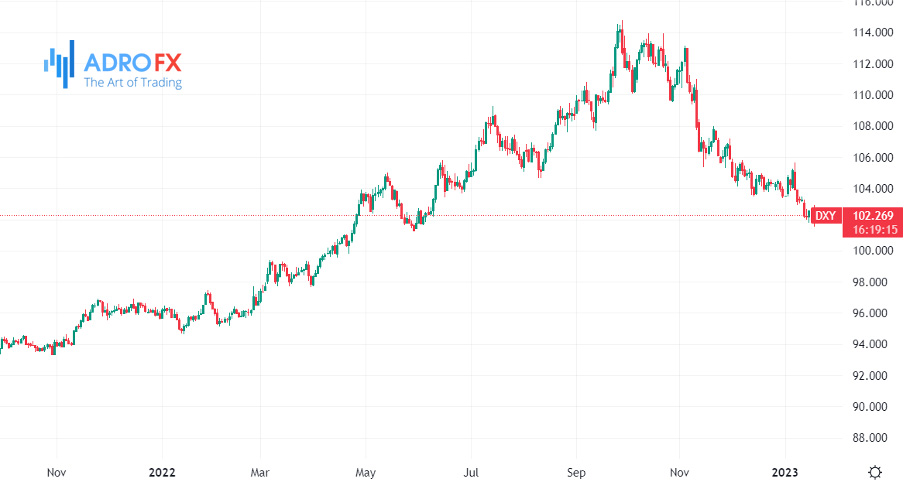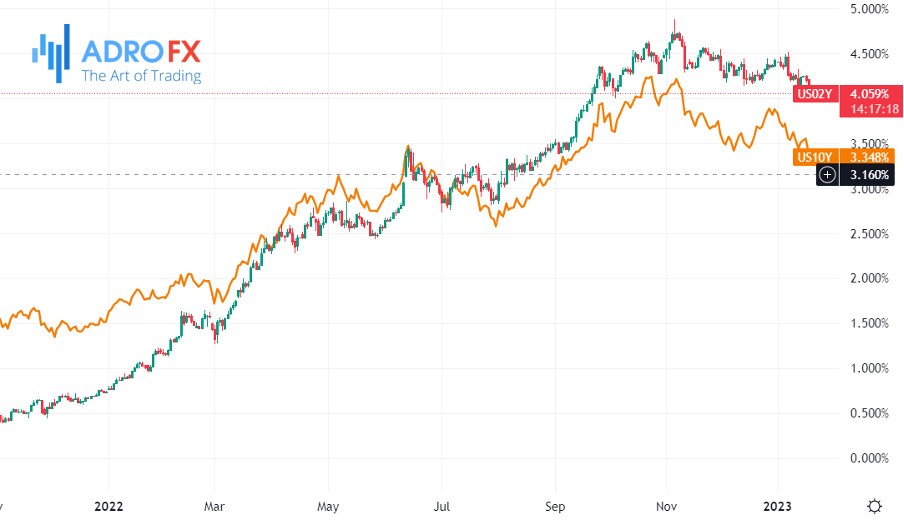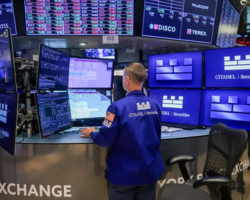Dollar Volatility Rises as Markets Fear a U.S. Recession Again | Daily Market Analysis

Key events:
- Australia – Employment Change (Dec)
- Eurozone – ECB President Lagarde Speaks
- Eurozone – ECB Publishes Account of Monetary Policy Meeting
- USA – Building Permits (Dec)
- USA – Initial Jobless Claims
- USA – Philadelphia Fed Manufacturing Index (Jan)
- USA – Crude Oil Inventories
The dollar showed volatile trading on Wednesday. Against the euro, the U.S. currency fell during trading to its lowest level since April 2021 at 1.0887. However, by late afternoon the dollar had recovered almost all its losses against the euro and the dollar index rebounded to 102.36p. Almost at Tuesday's closing level (102.39p.).

The dollar's initial weakness was due to the reaction to the producer price statistics. The PPI fell 0.5% month-to-month in December, the most significant decline since April 2020. On a year-to-year basis, the PPI growth rate slowed to 6.2% y/y, down from 7.4% y/y in November and a forecast of 6.8% y/y. Meanwhile, the PPI excluding food and energy rose 0.1% m/m and 5.5% y/y, below the forecast (5.6% y/y) and below November's 6.2% y/y. However, the November growth rate was revised downward from 0.4% m/m to 0.2% m/m.
The data confirms the signal provided by last week's consumer inflation report. Price pressures are easing and both supply and demand are moving steadily toward equilibrium.

The drop in retail sales in December also exceeded estimates, as did the decline in industrial production. This implies that the Fed is close to a peak rate hike. The market believed so much that U.S. Treasury 2-year note yields fell to a new low since early October 2022 at 4.07%, and ten-year note yields formed a new 4-month low of 3.36%. The federal funds rate futures market is 100% confident that the Fed will only raise rates by 25 bps on February 1, and the probability of the same minimum increase in March has dropped to 74% (89% at the beginning of the week).
Thus, the market is increasingly inclined to believe that the Fed rate could peak next month at 4.75%. At the same time, expectations remain for a rate cut through the end of 2023 of at least 25 bps.
The December and January statistics (before this week's data) hinted that the Fed had a unique chance to get inflation under control without a significant slump in employment. This did not suggest a sharp increase in unemployment, and thus recession risks were reduced in market assessments. However, this week's statistics, with retail sales down (-1.1% m/m) at their highest level in a year, indicate that consumer demand is cooling, which is what has supported economic growth in recent months amid a sharp rate hike in 2022.
Meanwhile, major U.S. companies (it is earnings season in the U.S.) are signing off on plans to sharply reduce the number of employees or suspend hiring. As a result, the risks of a moderate recession have risen. That put pressure on the U.S. stock market on Wednesday, and the dollar regained losses amid lower risk appetite even as bond yields fell.

The S&P 500 index failed to post a New Year's rally in December 2022. We have seen an attempt since early January. Another attempt to break out the 200-day Moving Average and the important 4000-point level. However, the broad market index closed Thursday at 3928.86 points, posting its highest intraday decline in a month on Wednesday.
The appeal of bonds has increased in the context of the rising risks of a full-blown recession rather than a moderate one. The dollar, on the one hand, should suffer from rising demand for treasuries and falling yields. On the other hand, the risk-off in equity markets will support the U.S. dollar.










